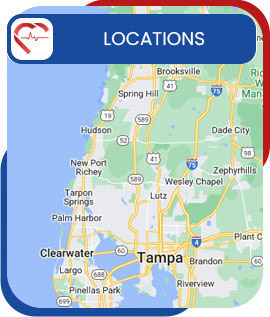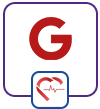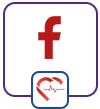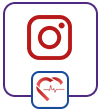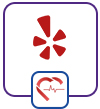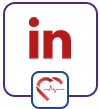What Causes Eye Strains and Where should I go for Treatment in Lutz and New Port Richey, FL
Eye strain is often caused by prolonged screen time, improper lighting, or uncorrected vision issues. At Urgent Care & Wellness Center, Dr. Rushabh Vakharia offers professional care to diagnose and treat eye strain, providing personalized solutions like eye exams and lifestyle recommendations. If you’re experiencing discomfort, Dr. Vakharia can help you find relief and improve your eye health. For more information, contact us or book an appointment online. We accept walk-ins. We serve patients from Lutz FL, New Port Richey, FL, and surrounding areas.
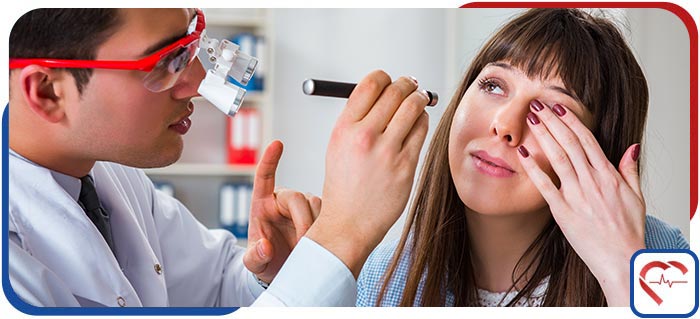
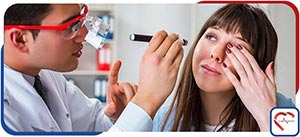
Table of Contents:
Does reading for a long time cause eye strain?
Can poor lighting affect your eyes?
Do small text and bright screens strain your eyes?
Can driving for long hours cause eye strain?
We understand that extended reading sessions, whether from digital screens or physical books, can significantly contribute to eye strain, medically termed asthenopia. Our holistic approach recognizes that prolonged close up tasks often result in decreased blinking, leading to dryness, irritation, and eye fatigue. Additionally, the constant effort required by the eye muscles to maintain clear focus during prolonged reading can cause blurred vision, headaches, and overall visual discomfort.
Certain factors can further intensify these symptoms, including inadequate lighting conditions, small font sizes, poor contrast between text and background, improper reading posture, and incorrect viewing distances. Digital devices such as tablets, smartphones, and computers may exacerbate eye strain due to screen glare, reflections, and blue light emissions, which disrupt visual comfort and overall wellness.
If you continue experiencing persistent symptoms despite these modifications, we recommend scheduling a consultation with our experienced wellness professionals. At Urgent Care and Wellness Center, we can assess your visual health holistically, rule out underlying visual or refractive issues, and help you develop personalized strategies to maintain optimal eye comfort and overall well-being.
Poor lighting conditions can significantly impact your visual health and overall well being, aligning closely with our holistic approach. Insufficient illumination forces your eyes to work harder to maintain clear vision, frequently causing discomfort such as headaches, blurred vision, dryness, irritation, and even temporary double vision. These symptoms can negatively influence your daily activities, productivity, and overall quality of life, affecting both your physical and emotional wellness.
While inadequate lighting conditions typically do not cause permanent eye damage directly, they can intensify existing visual issues and contribute to chronic eye strain. This ongoing strain makes it more challenging to distinguish details or contrasts, requiring increased visual effort and ultimately leading to fatigue and discomfort.
At Urgent Care and Wellness Center, we emphasize preventive care and proactive wellness measures. Ensuring proper lighting in your home and workspace—preferably natural daylight or artificial lighting designed to closely mimic daylight—can substantially reduce eye strain and enhance your comfort and productivity. Additionally, incorporating ergonomic practices, adjusting brightness settings on digital devices, and taking regular visual breaks aligns with our holistic approach to health and wellness, promoting overall visual comfort and reducing eye fatigue.
If you regularly experience persistent eye strain or discomfort related to lighting conditions, our wellness specialists are here to support you. We encourage you to consult with our healthcare providers, who can offer individualized recommendations, preventive strategies, and comprehensive wellness solutions tailored specifically to your unique needs and lifestyle.
Small text and bright screens not only strain your eyes but can also impact your overall wellness. We understand that prolonged screen time and visual stressors can significantly affect your physical comfort, mental well being, and quality of life.
When you focus on tiny text, your eyes must constantly work harder, contributing to fatigue, discomfort, headaches, and even stress. Bright screens emit artificial blue light, which may lead to eye strain, dryness, blurred vision, and disrupted sleep patterns, negatively impacting your wellness goals and daily functioning.
Continuous exposure to screens reduces your blink rate, drying your eyes and causing irritation. This discomfort can distract you, decrease productivity, and limit your ability to fully engage in healthy lifestyle activities. Additionally, constant eye muscle adjustments required in bright or high-contrast environments can exhaust your eyes, contributing to digital eye strain or computer vision syndrome.
To support your overall wellness journey, consider making adjustments such as enlarging text size, reducing screen brightness, and scheduling regular screen breaks. Practicing the 20-20-20 rule—looking at something 20 feet away for 20 seconds every 20 minutes—can help refresh your eyes, improve mindfulness, and enhance your overall health and comfort.
We believe in comprehensive care. If eye strain symptoms persist or interfere with your daily activities, we encourage you to consult with an eye care professional to ensure there are no underlying vision concerns. Your vision health is an integral part of your wellness journey, and we are here to support you every step of the way.
Driving for prolonged periods doesn’t just affect your eyes; it can impact your overall physical and mental wellness significantly. We understand that holistic health involves paying attention to every aspect of your body, including your visual health. Prolonged driving can lead to eye strain—also known as asthenopia—which occurs because your eyes remain intensely focused on the road, dashboard, and mirrors without adequate rest. Constantly shifting focus between near and far objects, exposure to headlight glare, and sustained concentration place significant stress on your visual system.
Symptoms of eye strain include:
● Tired, sore, or burning eyes
● Blurred or double vision
● Difficulty focusing
● Headaches
● Increased sensitivity to light
These symptoms are often worse at night, as reduced visibility forces your eyes to work harder.
We believe prevention and proactive care are key. Here are practical wellness strategies you can implement to minimize eye strain and safeguard your visual health during extended driving periods:
● Schedule regular breaks: Take short stops to stretch your legs, relax your eyes by looking at distant objects, or momentarily close them to rest your eye muscles.
● Optimize your driving environment: Adjust your vehicle’s interior lighting to reduce reflections, keep your windshield and mirrors clean, and use sunglasses during daytime driving to minimize glare.
● Stay hydrated and blink frequently: Hydration supports overall body wellness, including eye health, while regular blinking helps prevent dryness and irritation.
If you regularly experience persistent or severe symptoms of eye strain, we recommend consulting an eye care professional to rule out any underlying vision issues.
At Urgent Care and Wellness Center, our team supports you in achieving optimal health and well being by addressing all elements of your lifestyle, including daily activities like driving. Connect with us today to learn more about how we can help you sustain a balanced, healthy, and comfortable life. For more information, contact us or book an appointment online. We serve patients from Lutz FL, New Port Richey FL, Land O’ Lakes FL, Cheval FL, Greater Northdale FL, Greater Carrollwood FL, River Ridge FL, Seven Springs FL, Port Richey FL, Bayonet Point FL, Hudson FL, and Elfers FL.

Additional Services You May Need
▸ Urgent Care
▸ COVID Testing
▸ Illness
▸ Injuries
▸ X-Rays & Labs
▸ Sports Physicals
▸ Employment Physicals
▸ Occupational Medicine

Additional Services You May Need
▸ Urgent Care
▸ COVID Testing
▸ Illness
▸ Injuries
▸ X-Rays & Labs
▸ Sports Physicals
▸ Employment Physicals
▸ Occupational Medicine

